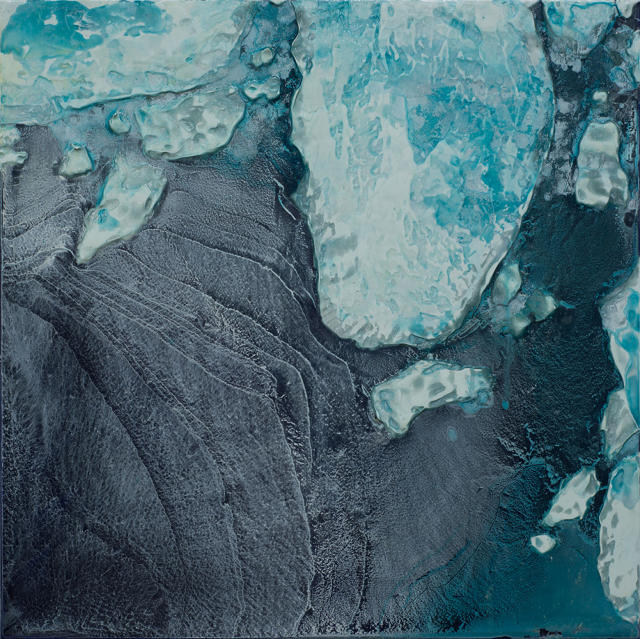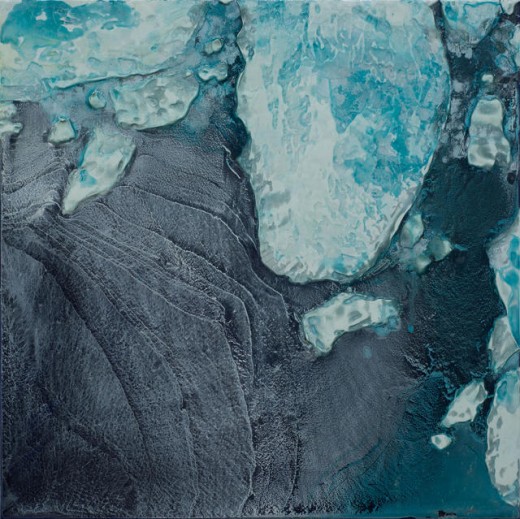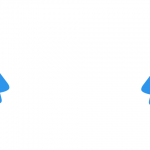These Paintings Were Made With Toxic River Sludge
Buy a painting, clean a waterway.
Some of the underground coal mines dotting southern Ohio have been abandoned for over a century, but they’re still turning nearby streams bright orange with toxic sludge. Now there’s a new way to fund the expensive process of cleaning up the water: Turning the sludge—full of iron oxides—into paint for artists.
Pigments like burnt sienna have been made from iron oxides since early humans were painting on caves, but this may be the first time that anyone has tried to commercialize it from pollution. The project was the brainchild of Ohio University professor Guy Riefler, who collaborated with art professor John Sabraw to test the paint out.
In a new art show that opened March 6 at the Thomas McCormick Gallery in Chicago, Sabraw demonstrates exactly how well the paint works.

Inspired by how the sludge swirled in the streams, Sabraw started thinking about the similarity of certain patterns that repeat in nature at micro and macro scales—like human veins that look like veins on a leaf or a river delta. His paintings of those patterns, layered as much as half an inch thick on the canvas, also show off the brilliance of the new paint.
It wasn’t quite like working with standard paint from an art store. “Each batch is a negotiation,” says Sabraw. “Right now it’s small scale, so each batch is from a different place, with a little bit different grit, different color, and even a different smell—you can smell the river in it, still.”
Soon, however, the paint will be ready for mass production. “We’re hoping that in the next few months we’ve reached a certain point in the research where we can take this full scale, and start a very large-scale cleanup,” Sabraw says.

Ultimately, the team hopes that the process can fully clean up the streams. “The basic goal of this thing is to make sure it’s as self-funding as possible,” Sabraw says. “We want to generate a ton of pigment, sell the pigment, and that would pay for more cleanup of the river. It’s like the cheapest cleanup you ever heard of, because it’s free—or you can even make a profit out of it.”
The pigment could sell for 50 cents a pound wholesale, and a single site can generate 2,000 pounds of pigment in a day, they say.
“Once we perfect it here, this is transportable,” Sabraw says. “West Virginia can pick this up, Pennsylvania, Australia has a tremendous problem with this kind of thing. Any place that suffers from heavy metal problems.” By some estimates, there are half a million abandoned mines in the U.S., many of them coal mines.
Sabraw hopes the project can inspire others to tackle local problems. “Jump on board,” he says. “Do something. You can do something really effective from wherever you are.”
Fast Company , Read Full Story
(144)














